The Fog of Protest
“We could wrap this up right now,” a police officer said over the scanner traffic that I was listening to as I walked along Mission Street in San Francisco. It was late on the night of June 3rd, and I had joined a protest group walking south on Valencia Street in San Francisco’s Mission District. The group was loud and a little rowdy, but not destructive. 30-something people trailed down to 20-something people — counts are always a little abstract in a group like this. We made a couple turns and walked back north, along Mission. “We could wrap this up…” the officer had said, and then the radio chatter moved smoothly onto the tactical part.
I was listening to the police scanner while walking with the group. When I do this, I often notice a disconnect between the police and the people on the ground, and sometimes between the police and the police on the ground. In this case, there was some panicky talk of the protestors building a barricade and setting it on fire after we turned onto Mission Street. I spun around to figure out what I’d missed. This didn’t seem like that kind of protest. Loud and rude for sure, we were hours after curfew and this was the proud hood crowd more than the carefully-stenciled-signs-of-unity crowd. But, not violent, and not even vandalous. From looking over the street behind me, I couldn’t see what the police were talking about. I did spot a newly-emptied trashcan on the sidewalk, but not in the street. No one was near it, much less ready to set fire to the mess. I’m not a fan of littering, but I’ve watched people build burning barricades across streets, mostly in France, and this wasn’t that. This was someone kicking the trash over.
The reason for kettling and arresting this group given by an officer on the scanner was the curfew violation. It was late, and there were “about 25” of us, an officer said over the radio. It gave me a sense that the police were done and wanted to leave. “We could wrap this up right now…” and they laid out a plan to bring in officers on both sides, close in, and arrest everyone. I ducked onto a side street and circled around to different sides of the area now blocked off by police, and tried to take pictures of the arrests. (I did not get many, Julian Mark of Mission Local got the best images while being detained.)
These three things, curfew, the hour, and something about fire, became conflated later into a nebulous story about lighter fluid, when the cops were tired of following 25ish shouty people cussing at them, but not doing much else.
None of this was extraordinary. Whatever problems are inherent to a protest situation, they are deeply compounded by police forces, and, to a lesser degree, protestors, all being very sure about what the other side is doing and thinking without having much real knowledge or insight.
I’m willing to say after more than a decade of doing this work that those arrests took place because the police were tired and wanted to go back to the station or home. But to get there, they really had to work up some other reason, whether they were aware of it or not. Police are mere humans, and subject to mere human follies. Protestors are too, but everyone knows that. Protestors look like a mess, even when they’re not. The police are the ones who dress alike and larp¹ being Perfectly Coordinated Machines of Order, instead of tired humans who just need to pee, damnit. This underlying humanity is scant comfort for those being arrested, maybe even less so for the one protestor that night who was taken away in an ambulance. When you’re supposed to be the perfect passionless embodiment of state violence, but you’re just a petty and tired as anyone, you can end up being a right bastard without knowing how, or that, you got there. This is what lies behind the sentiment ACAB: All Cops Are Bastards. It’s not a personal statement; it’s just what happens when role play gets out of hand, and in our society, the role play is always out of hand.
The other human bias police often suffer from in these chaotic scenes is that vigilance for the extraordinary generally leads humans to perceiving extraordinary things, whether they are there or not. Back on June 1st, when San Francisco was just getting started on its larger and more raucous protests, I was tracking people around the SOMA District (South of Market, a major dividing street in the city) protesting police violence. Scanner chatter was high, and the largest group was at the base of the Salesforce Tower, the tallest (and newest) building on the San Francisco skyline. There was talk of crowbars and vandalism, and the back-and-forth was working itself up into urgency. I started to run towards the tower, a few blocks away, because I know where this kind of talk usually leads. But another officer got on the radio. He was on the scene, and things were fine. “This is a peaceful protest,” he said repeatedly. “Don’t antagonize them.” He talked the chatter down.
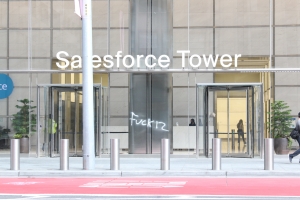
“Fuck 12” (12 means police) in spray paint was the only evidence of the protests. I’m sure it’s been cleaned up by now.
I stopped running, which I appreciated, and made my way over towards the building more slowly, taking some pictures along the way. The chatter became tense a few more times, but the original officer kept talking them down. “They’re peaceful,” he said repeatedly, and something like, “We have them,” as in he and the other officers on the scene were able to handle it. Another officer said there was vandalism, and the original officer said “Very minor” and again, “Don’t antagonize them!” He expressed the tension of someone who was talking his friends out of doing something stupid, which as it turns out, he was. In the end the Salesforce Tower was fine, and undoubtedly better than it would have been if the police had clashed with thousands of protestors at its front door. Cooler heads prevailed.
We who attend or cover protests have a saying which we often don’t say aloud because of the accusation of bias: “It ain’t a riot ’til the riot cops get there.” This isn’t universal, but it’s more common than most people think, including the police. Even well-meaning cops are in a system where they’re looking for something to do violence on, and looking for things hard enough makes humans tend to see what they’re looking for. It’s hard to understand what’s happening in a mass of angry people, but it’s violence much less often than you’d think.
I have seen actual riots that are riots from their very first moments, torrents of anger and grief that become a violent backlash on the physicality of society itself. But I’ve never seen a protest get much beyond turning over trashcans and spray painting things without police provocation. But that form of escalation is so baked-in to the dance of police and protestors now, I can’t imagine police can see it the way I do. The police look for trouble, they invariably find (and create) it, therefore they know there’s always trouble to look for.
Sometimes cooler heads prevail, sometimes there’s proportional responses, or no responses, and the crowd moves on without much damage, or the people drift off and go home tired at the end of a long day of exercising their First Amendment. On those occasions, protestors are often praised as peaceful, but not by me. I expect most protestors (except maybe the French) to be largely peaceful by default.
Instead, I’ve come to praise the cops more over the years, though it’s damning with faint praise. I praise them for not crashing hard into a crowd because a kid got out a can of spray paint. I praise them for just letting people walk it out late into the night, until everyone gets to go home and sleep. I praise them for not jumping at shadows and petty slights, for not getting frightened in the fog of protest and turning violent. Good cop, don’t hit anyone.
Honestly, the fog of war effect and confirmation bias are not just police problems, they’re human problems. They are the mistakes Homo Sapiens always make, and everyone including me, and you, would likely have the same errors of perception if we were suddenly part of a police force. As long as the police and people are other from each other, human biases towards the other will defeat our unity and progress.
The most heartening thing I’ve seen is police who took a knee, Kaepernick-style, against police violence. But I don’t believe police violence can be meaningfully curbed until the police are no longer a separate force from their communities, both sides lost in fogs of human bias.
- Larp stands for live action role play, a style of gaming involving dressing up and playing roles in a group.
My work for Emptywheel is supported by my wonderful patrons on Patreon. You can find out more, and support my work, at Patreon. Thanks to Ryan Singel.

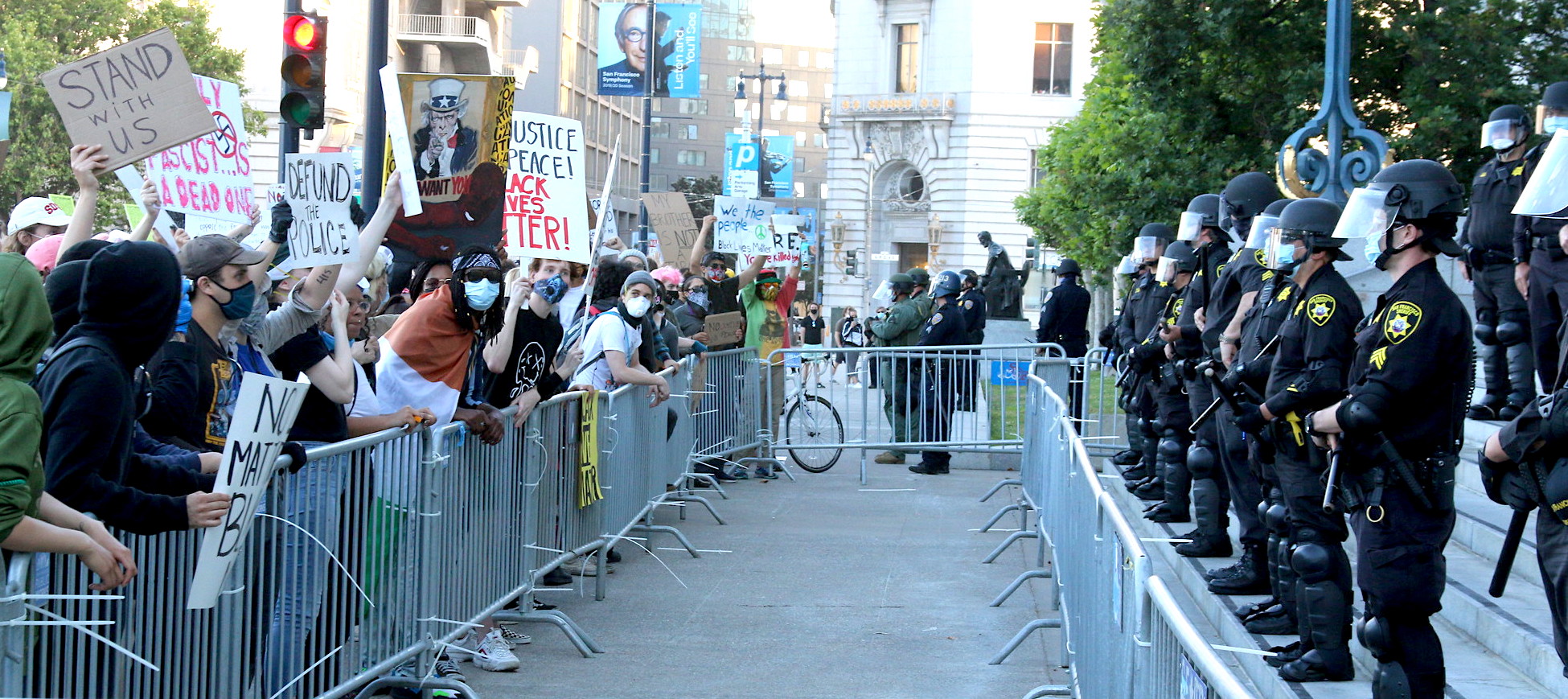
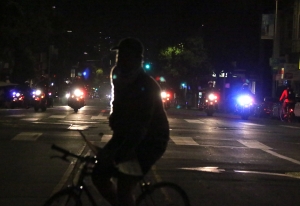
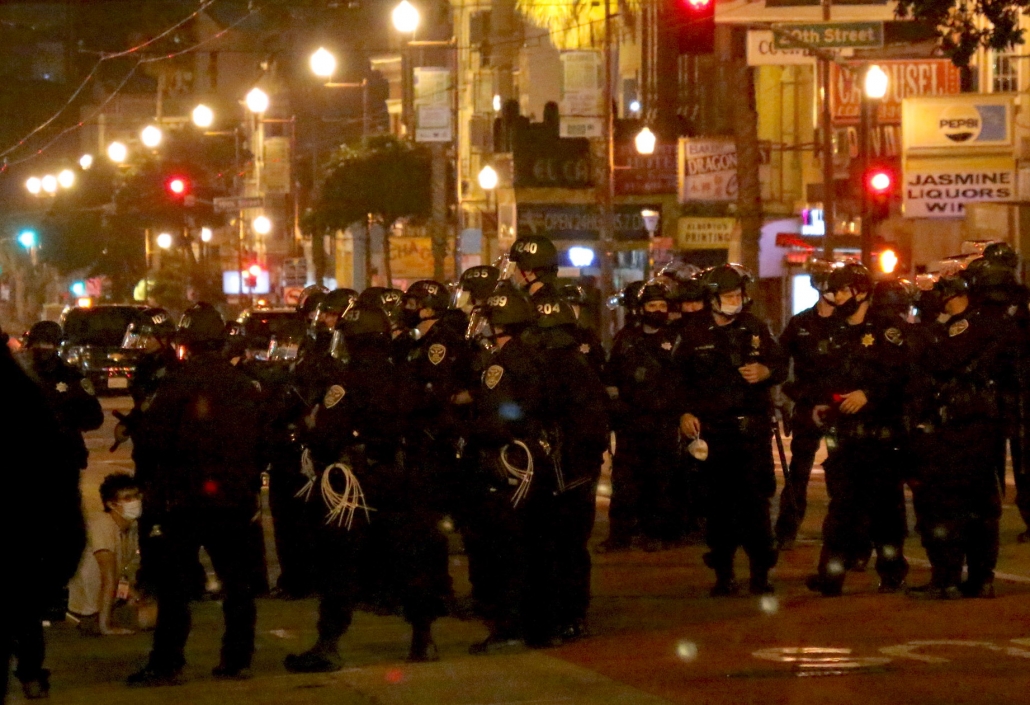
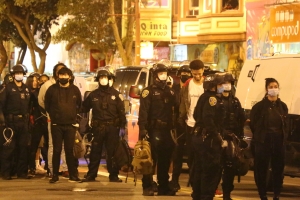



Thank you for an embedded point of view.
Your comment about the French reminded me of an old Zappa observation:
“There is no hell, there is only France.”
Good luck to us all.
Thanks, Quinn, for keeping a reasonable commentary going on this.
May you stay safe and on the beat.
Friends don’t let friends cop stupid.
Quinn, you really captured the dynamics of both protests and policing here — thanks. I’ve had police officers in the various congregations I’ve served, some of whom are like the officer you describe here, and others are the ones chomping at the bit to bust somebody’s head. And this – “But I don’t believe police violence can be meaningfully curbed until the police are no longer a separate force from their communities” – is priceless.
“But I don’t believe police violence can be meaningfully curbed until the police are no longer a separate force from their communities”
absolutely agree. but then what do you do with an outfit like NYPD where officers, many (not all) of whom are second- or third-generation white-flight, come in from all points metro NY where they live — LI (both counties), upstate NY (Westchester), NJ, & CT — to practice their finest service behaviors in NYC, with a union president (Pat Lynch) every bit as truculent and obstructive as Bob Kroll in Minneapolis??
Thanks for a great perspectives piece. Having been involved in planning a number of demonstrations, I have worked with police in advance. It does us all well to remember that on the other side of our differences lie frail human beings more like us than not. One of the many causes of the Kent State tragedy in 1970 was the breakdown of human endurance during a long, hot tense weekend.
In answer to Ernesto’s question. Defund and reconstitute. Just like legislators do to “failing” schools. Change the mission, the personnel, re-orient training toward a new mission, establish residency requirements, subsidize housing, if needed as it would be in many expensive cities. NYC is a prime example of policing that needs to be reconstituted with members of the community as part of the solution rather than objects of state power.
“Defund and reconstitute.”
from your lips to God’s ears.
“Defund and reconstitute.”
from your lips to God’s ears.
It took the state of NY a dozen years to reconstitute the failing school district of Westbury, LI. It took Long Islanders nearly twenty years to prevent the Shoreham nuclear power plant from commercial operation. (Notwithstanding Big Cuomo cutting a deal with the power company at the eleventh hour to let it run for 23 hrs @ 5%, thereby shifting the entire burden of decommissioning & cleanup onto the rate payers without producing a single megawatt of commercial power.)
Maybe Ernesto is getting a little long in the tooth but he wonders how the hell you get NY’s finest to give up one of the cushiest preferments going, submitting to “reorientation,” and giving up their storm trooper playthings, all the name of playing nice with persons of color.
There are “residency requirements,” by the way. You have to be a US resident and a resident of either one of the five boroughs, or one of the two Long Island counties, or one of four counties upstate “…within 30 days of being hired.”
Know how easy it is to play that game…?
This is why we need to rethink how we maintain a peaceful and sustainable society, not necessarily relying on institutions created in a violent and wasteful one to do that.
Many cities are out of the price range that most police (and firefighters) can afford. It’s a city problem, not a uniformed-people problem..
Yeah, but there are ways for cities to encourage and subsidize the cops living there. It’s not that hard if a municipality wants to do it.
This is why I come back to emptywheel again and again, day after day, the extraordinary high quality of the rational, informed, intelligent discourse. Thank you Quinn.
What a wonderful piece, which should be compulsory reading for police, and anyone about to go out on a protest.
And by the way, France isn’t as different as you think. You only have to turn a corner in a quiet country town where a few angry farmers have set a tyre or two on fire and come on a posse of about 20 CRS (as I have) to understand that tough policing begets trouble.
See this is what I mean. The French *start out* setting fires. :D
Yeah, but we need to stay warm, it’s cold out there in the streets.
The thing is, at least since the labour law reform protests in France, there was a shift in police strategy. They used to mainly leave union protestors alone, focusing on the head of the protests (where thing were not set on fire) to basically going in close proximity, sending insane amount of tear gas, and provoking protestors, including ones from the main union. So I guess now we just start right in fight mode, since this is how it will ends anyway.
However, in the recent days, there was huge and peaceful protests, without setting things on fire, here in support of Georges Floyd and Adama Traoré here. They still get tear gased though.
Yeah the CRS are something else, man.
One thing I have noticed about SFPD is that the “beat cop” no longer exists! They are always driving in the squad car. They have become disconnected from the communities that they serve. I feel that if a certain percentage of the police were mandated to spend their shifts walking the neighborhoods that they serve, there would be a lot less crime. Certainly car break-in’s and such. The community may feel more at ease talking to them about community issues. Just my 2 cents.
My experience with SFPD in recent years is that 1) they are into enforcing racist stereotypes in neighborhoods (such as Hunters Point), and 2) at security duty or protests where some of them are on steroids, speed, or both. In both cases, their command structures did not complaints seriously.
So scanner chatter is to jacking up cops as twitter is to jacking up liberals and as Zuck’s and Rupert’s shitshows are to snuffing democracies.
How great for our sociality that the post-COVID world imagines *even more* remote-work zoom-und-drang.
There are a lot of great cops doing great community policing, as it were; these microevents you report — though of a different context — offer some pretty dramatic examples as to why ‘being there’ matters.
Hey thanks for the footnote on “larp” (I knew what that was thanks to having worked for Wired in ’07-’11) but what is “kettling”?
Oh, I should go back and link that. It’s basically the action I describe in the next could sentences, where they surrounded the protestors and closed them in, and make arrests. Thanks for the catch, Dylan!
It is literally like corralling cattle, except for with people. Not a perfect explanation, and different departments do it different, but this from GQ is a good intro.
Back during the eviction of OWS in New York, I spent about seven hours in a kettle, out of about 19 hours on my feet that day. My editor (the Ryan I thanked in this piece) called me and chewed me out for not filing. I said, I’m in a kettle right now. He paused and said it was the best excuse to not file I’d ever come up with. In the end, I literally phoned it in, old school style, from inside the police cordon.
Good times, good times.
Thanks for the explanation, Quinn, and the link, Bmaz. I kept running across the word and getting confused in the past week. Now I am smarter!
Quinn – I linked the GQ article because I was lazy and did a ten second google search and there it was and wanted to answer the question by Dylan. It is an okay description, but it is kind of funny that it acts like this is a new phenomenon.
As you note, it was all the rage in policing during the OWS period. And goes back way further than that as the old SNCC people will attest. An awfully pernicious tactic. Seven hours in one? Ooof. And I know Ryan, and he is truly great.
Reminds me of a non-violent protest of yore… where police became consternated by all the late night peace pow-wowing going on inside their kettling operation. Eventually ended up in a full blown cop riot to get the busses full of arrested non-violent protesters out of town through a series of burning dumpsters, overturned civic planters, broken glass and mayhem. Yeah, the reciprocal help request to other cop jurisdictions brought quite out some interesting characters to the scene. Yep, you just never can tell how much stupidity will go down until you’ve actually been in the middle of it. I believe that the most radical of the protesters tried to overturn the busses to prevent the arrested non-violent protesters from being hauled off to jail… and then the non-violent protesters arrested earlier were all charged with the rioting that occurred after their arrests. Needless to say, the superior court judge had a serious itchy scalp when it came to bail hearings of defendants… in the end, almost everyone got ORed out, and later, after many months of footdragging by the DA’s office, angry letters to non-violent defendants seeking plea deals, etc, etc, all charges were dropped, including the charges of refusing to disperse… from a kettling operation… but, hey, at least some cops got to throw some rocks back… so lawlessness isn’t new to policing or police leadership… at some of the best universities. And the best part? They asked the corralled, non-violent protesters, individually, if they wanted to be arrested or “released now if you won’t come back to campus during the curfew order” before they put each defendant on those busses… some said “yes”, some said “no” but the police saw a lot of both later, one way or the other, as daybreak dawned and the students all began to come to campus for classes, shocked to see so many busses trying to make their way off of campus full of compatriots. Good times… if you weren’t hit by a rock, your bus wasn’t turned over, and you weren’t an assistant DA assigned to explain the riot charges to a superior court judge, etc. (And, so help me, it did lead to something positive when it comes to anti-racism efforts in the short and medium term… although further afield then what is hopefully happening now.)
For a fictional view, try Cory Doctorow’s “Little Brother”. Kettling, drones, tear gas, all of it.